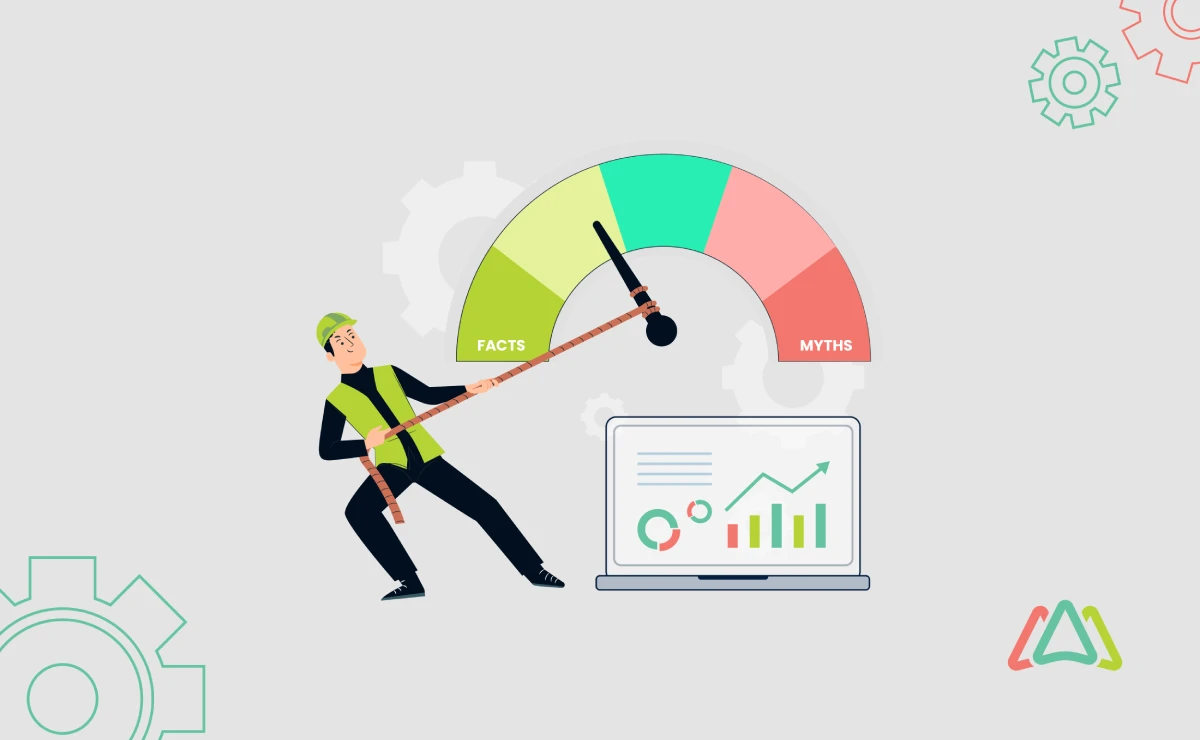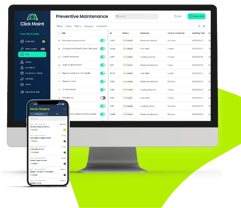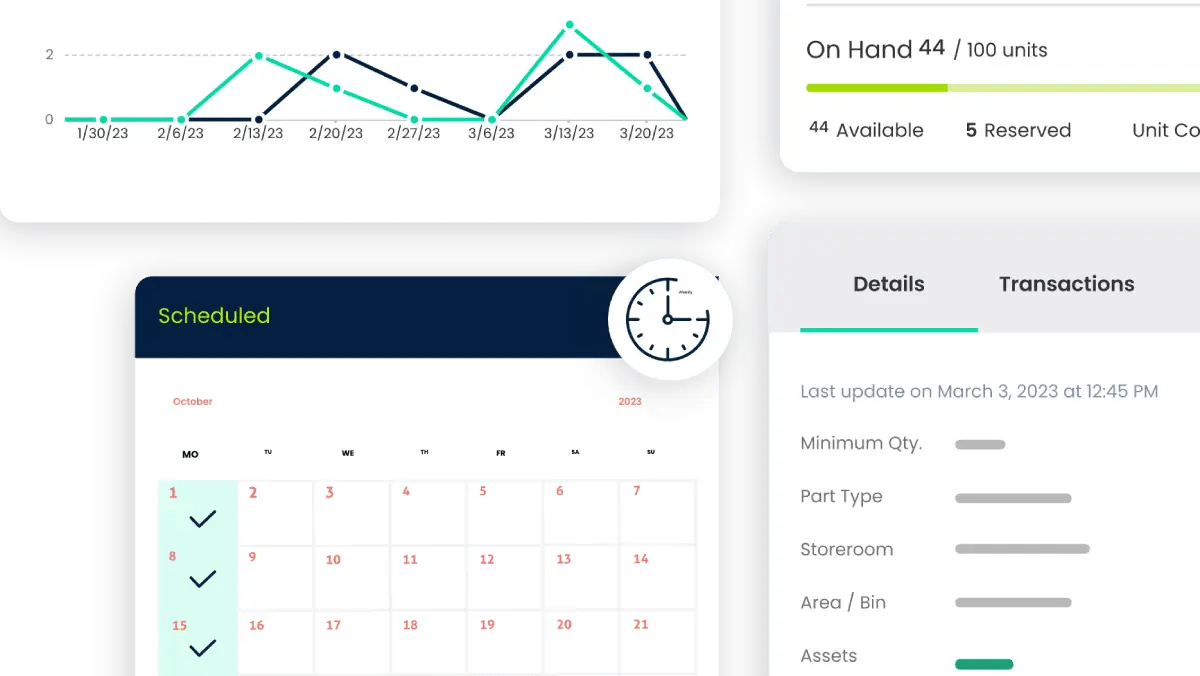
Putting to Rest 5 Myths about CMMS Software
Introduction
Computerized maintenance management systems (CMMS) are increasingly appearing on business leaders’ radar screens. The reason is clear: the CMMS marketplace is booming, offering indisputable evidence of its outstanding performance record. Consider Markets and Markets’ projection that the CMMS marketplace will grow from 0.57 billion USD in 2020 to USD 1.3 billion by 2025, at a CAGR of 18.9% during that period.
You may wonder what’s behind the burgeoning growth of the CMMS marketplace. It’s quite simple; the software is darn good and does what it's designed to do. CMMSs can take a company’s operational efficiency to a new level by streamlining its maintenance operations and maximizing uptime, ultimately cutting costs and increasing profit. Since business leaders know that every minute of downtime can translate into lost revenue and decreased productivity, it's no wonder why these systems are so attractive. Yet, despite its impressive track record, CMMS software faces misconceptions that cloud its reputation.
Streamline managing Work Orders, Preventive Maintenance, and Equipment.
Start your 30-day FREE trial
Let's explore the world of CMMS software and debunk some common myths that might deter business owners from investing in this invaluable tool.
Myth 1: CMMS Software is Too Expensive
Going down the path of implementing a CMMS costs money, time, and resources. However, the idea that CMMS software is prohibitively expensive is a misconception that overlooks the long-term benefits the software offers. While the initial investment may, at first glance, seem daunting, the return on investment (ROI) quickly becomes evident through reduced downtime, extended equipment lifespan, and optimized labor utilization. A recent study by Aberdeen Group reported that companies implementing CMMS saw a 28% reduction in maintenance costs and a 20% decrease in downtime.
Furthermore, modern CMMS solutions offer scalable pricing models and flexible subscription plans tailored to accommodate businesses' diverse needs and budgets across all sizes and sectors. These pricing models often include tiered packages with varying levels of functionality and support, allowing organizations to choose the option that best aligns with their specific requirements and financial capabilities. Moreover, many CMMS providers offer customizable pricing options, enabling businesses to add or remove features as needed, ensuring they only pay for the functionalities they use. This level of flexibility empowers companies to scale their CMMS implementation according to their growth trajectory and budget constraints, making maintenance management software accessible and affordable for businesses of all scales, from small startups to large enterprises.
Get your Click Maint CMMS estimate instantly!

Myth 2: CMMS is Only for Large Organizations
CMMS solutions were tailored for large enterprises early in their software development. Today, this is no longer the case. Technological advancements have made modern CMMS software highly scalable and customizable, suiting businesses of all sizes and industry sectors. Small and medium-sized enterprises can receive the same CMMS benefits as their larger counterparts. This means that organizations of all sizes can enjoy the advantages of streamlined maintenance operations, improved asset management, and enhanced productivity. This assertion, backed up by Plant Engineering’s 2022 survey, found that 48% of small and mid-sized manufacturers already used a CMMS.
Adding cloud-based CMMS platforms eliminates the need for expensive infrastructure investments, making them particularly cost-effective for smaller organizations that may lack the resources for on-premises deployments. Moreover, CMMS software's intuitive user interfaces and user-friendly features allow employees with varying technical expertise to navigate and utilize the system effectively. This accessibility ensures that small—to mid-sized organizations can quickly adopt and integrate CMMS into their operations, enhancing maintenance efficiency, reducing downtime, and maximizing asset lifespan without extensive training or technical support.
Myth 3: Implementation is Too Complex and Time-Consuming
There’s no way around the careful planning and effort that goes into implementing a CMMS solution. Nevertheless, the CMMS implementation process is not as complex or time-consuming as many believe. Most CMMS vendors offer comprehensive support throughout the implementation process, including data migration, user training, and admin setting configuration. Cloud-based CMMS solutions, in particular, have simplified implementation by enabling faster deployment and ease of use. To this point, a case study by TechValidate found that 84% of users reported a decrease in implementation time after switching to a cloud-based CMMS.
Many factors go into estimating an implementation timeline. Some of these factors include the complexity of the organization's maintenance operations, the size of the workforce, and the level of customization required. Depending on the scale of the implementation and the availability of resources, the entire process can take anywhere from a few weeks to several months. Cloud-based CMMS solutions typically offer faster deployment times than on-premises systems, thanks to their simplified setup and maintenance requirements. However, regardless of the implementation method, ongoing support and maintenance are recommended to ensure the long-term success and effectiveness of the CMMS within the organization.
Streamline managing Work Orders, Preventive Maintenance, and Equipment.
Start your 30-day FREE trial

Myth 4: CMMS Software is Difficult to Use
From a commonsense perspective, the belief that CMMS software is difficult to use flies in the face of the software’s growing popularity. While early versions of CMMS software may have had usability issues, later models incorporate significant advancements in user interface design and functionality, making them very user-friendly. Modern CMMS platforms are built with end-users in mind, featuring intuitive dashboards, easy navigation, and customizable features. Moreover, most CMMS providers offer extensive training and support services to ensure users can fully leverage the system's capabilities. A study by FacilitiesNet found that 67% of users reported increased ease of use after implementing CMMS.
On the other hand, maintenance leaders looking to implement a CMMS must be mindful of user resistance to CMMS adoption among some employees. This refers to the reluctance or hesitation of employees to adopt and fully utilize the maintenance management software, often due to concerns about change, perceived complexity, or concerns regarding the impact on their daily workflow. Here are some ways maintenance managers can address this issue:
- Provide comprehensive training sessions to familiarize users with the CMMS interface and functionalities.
- Highlight the benefits of CMMS adoption, such as reduced downtime, improved asset management, and streamlined maintenance processes.
- Involve users in selecting and customizing CMMS features to address their specific needs and preferences.
- Offer ongoing support and guidance to address any concerns or challenges during transition.
- Implement a phased approach to CMMS implementation, allowing users to gradually acclimate to the new system while minimizing disruption to daily operations.
- Foster a culture of openness and communication, encouraging feedback and proactively addressing misconceptions or resistance.
- Showcase success stories and real-life examples of how CMMS has positively impacted maintenance operations in similar organizations.
- Provide incentives or rewards for active participation and engagement with the CMMS, reinforcing its importance and value to the organization.
- Lead by example by demonstrating enthusiasm and confidence in the CMMS, inspiring users to embrace the change and leverage its full potential.
OUR INTUITIVE INTERFACE HELPS BOOST CMMS USER ADOPTION
Start your 30-day FREE trial

Myth 5: CMMS Can't Adapt to Changing Business Needs
The belief that CMMS software is inflexible fails to recognize the general adaptability inherent in modern systems. Contrary to the mobile phone industry, which continually offers upgraded models at least once a year, CMMS solutions are built with the ability to adapt and change along with a company’s needs. Unlike mobile phones, CMMSs need not be replaced simply because a company’s needs change.
Today's CMMS solutions are designed to grow and evolve alongside businesses, offering modular functionalities that can be tailored to meet changing operational requirements. Cloud-based CMMS solutions, in particular, facilitate regular updates and improvements without significant system overhauls. This ensures that the software remains aligned with industry standards and business practices. A report by Grand View Research supports the adaptability and scalability of modern CMMS solutions by highlighting how CMMS solutions are designed to evolve alongside businesses by offering modular functionalities and customization options to meet changing operational requirements. The report also notes how cloud-based CMMS solutions facilitate regular updates and improvements without significant system overhauls, ensuring the software remains aligned with industry standards and business practices.
The scalability of a CMMS can take several forms. For example, a company may initially implement a basic set of maintenance management functionalities tailored to its current requirements. However, as the company grows or its operational needs evolve, the CMMS can be expanded with additional modules and features to accommodate these changes. Furthermore, CMMS solutions often offer customizable configurations, allowing businesses to tailor the system to their specific workflows and processes. Once again, cloud-based CMMS platforms facilitate seamless updates and enhancements, ensuring the software remains aligned with the company's evolving needs and industry standards without requiring significant system overhauls.
Conclusion
The misconceptions surrounding CMMS software often stem from outdated information or a lack of understanding of the software’s capabilities. However, these myths quickly disappear when scrutinized, revealing a tool offering significant efficiency gains, cost savings, and operational improvements. Businesses of all sizes and across various sectors can leverage CMMS to streamline their maintenance operations, enhancing overall productivity and profitability.
Businesses contemplating investing in CMMS software should approach the decision open-minded, knowing its true capabilities and benefits. They should also be prepared to ask many questions about the many vendors in the CMMS marketplace. By debunking these common myths, companies can make informed decisions to drive their operations forward into a more efficient and productive future.
Streamline managing Work Orders, Preventive Maintenance, and Equipment.
Start your 30-day FREE trial
TABLE OF CONTENTS
Keep Reading
Spare parts management within maintenance can make the difference between a problem-free ...
16 Dec 2025
Every maintenance team eventually faces the same question: When should we repair, and when ...
12 Dec 2025
Enterprise Asset Management (EAM) software has become a cornerstone for organizations aiming ...
12 Dec 2025
Unexpected equipment breakdowns can disrupt operations, increase repair costs, and reduce ...
11 Dec 2025
Businesses are always looking for ways to improve efficiencies, reduce costs, and improve ...
9 Dec 2025
The longest U.S. federal government shutdown to date lasted 43 days, beginning on October 1, ...
5 Dec 2025
Every maintenance professional faces it sooner or later — that critical time when an aging ...
18 Nov 2025
The term 'best' is often used loosely, without a clear understanding of its context or ...
14 Nov 2025
In the not too distant past, maintenance strategies have been defined by reaction—fixing ...
13 Nov 2025
Tax season is the time of year that often sends a ripple of anxiety through many of us. The ...
11 Nov 2025
Selecting a Computerized Maintenance Management System (CMMS) can, at first glance, be an ...
4 Nov 2025
In healthcare facilities, equipment uptime involves more than achieving operational ...
31 Oct 2025
Companies are subject to economic ups and downs, also known as economic volatility. Today, ...
30 Oct 2025
Maintenance challenges are a constant struggle, with unplanned downtime costing manufacturers ...
27 Oct 2025
Last winter, a maintenance technician at a U.S. paper mill ignored a predictive alert that ...
10 Oct 2025
Many organizations proudly say they “have a CMMS,” but ownership alone doesn’t equal ...
9 Oct 2025
Every maintenance team is under pressure to do more with less. Unplanned downtime is often ...
7 Oct 2025
The implementation of simple, yet powerfully effective, checklists has repeatedly ...
3 Oct 2025
In manufacturing, every second counts. When production stops, whether due to scheduled ...
2 Oct 2025
The increasing cost of maintenance, lack of accountability, and siloed systems leave many ...
30 Sep 2025





